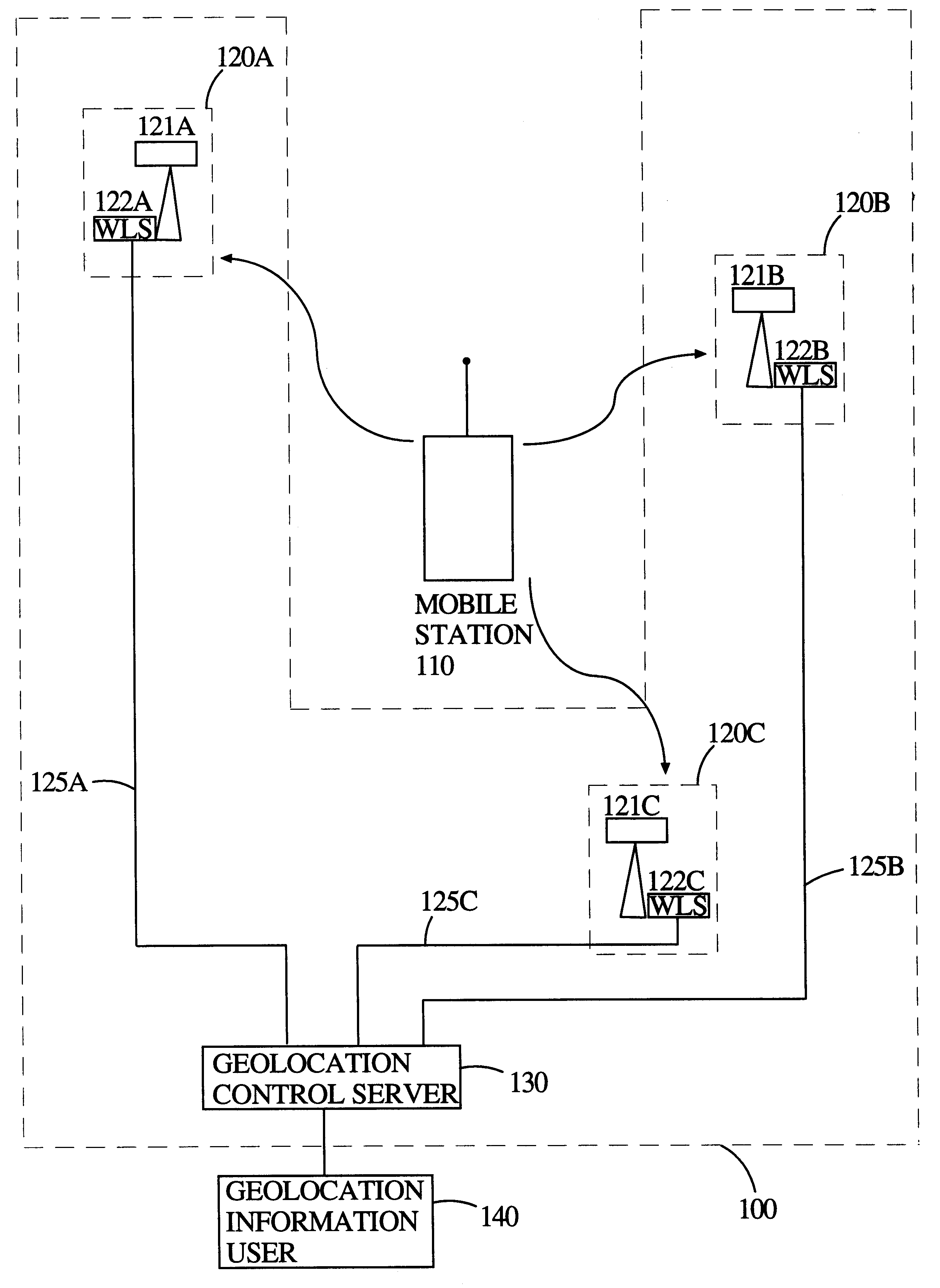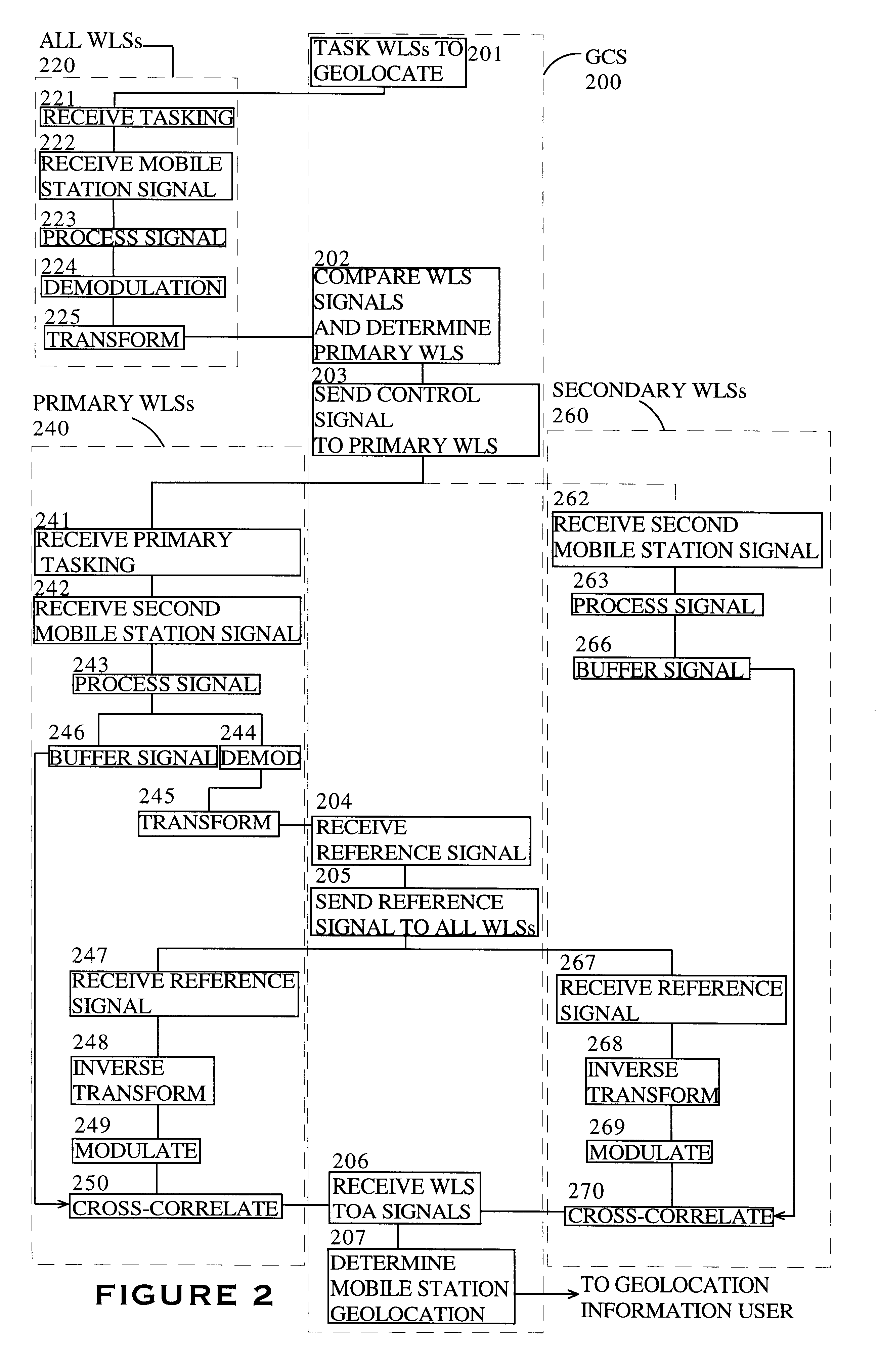System and method for analog cellular radio geolocation
a technology of analog cellular radio and system, applied in the direction of direction finders using radio waves, instruments, wireless communication, etc., can solve the problems of insufficient consideration of cost, complexity, required computation horsepower, and sampling rate processing limitation, and clearly an unacceptable amount of time for applications
- Summary
- Abstract
- Description
- Claims
- Application Information
AI Technical Summary
Benefits of technology
Problems solved by technology
Method used
Image
Examples
Embodiment Construction
A preferred embodiment of a novel system and method of geolocating a mobile station transmitting FM analog signals such as those used in the AMPS cellular radio air standard from a plurality of WLSs located in geographically spaced-apart locations is described.
FIG. 1 is a notional schematic diagram of a geolocation system according to an embodiment of the present invention. The geolocation system 100 comprises a number of WLSs, 122A, 122B, and 122C, typically located at the base stations 120A, 120B, and 120C, respectively, which include the antenna arrays 121A, 121B, and 121C, respectively. The antenna arrays may be either a single antenna or an array of antenna elements. While the present invention is not limited to co-locating the WLSs with the base stations, it is convenient to do so since the base stations and their antenna arrays are typically in-place and the WLSs can then simply be added to the existing structures. It is to be understood that while only thee WLSs are shown in...
PUM
 Login to View More
Login to View More Abstract
Description
Claims
Application Information
 Login to View More
Login to View More - R&D
- Intellectual Property
- Life Sciences
- Materials
- Tech Scout
- Unparalleled Data Quality
- Higher Quality Content
- 60% Fewer Hallucinations
Browse by: Latest US Patents, China's latest patents, Technical Efficacy Thesaurus, Application Domain, Technology Topic, Popular Technical Reports.
© 2025 PatSnap. All rights reserved.Legal|Privacy policy|Modern Slavery Act Transparency Statement|Sitemap|About US| Contact US: help@patsnap.com



